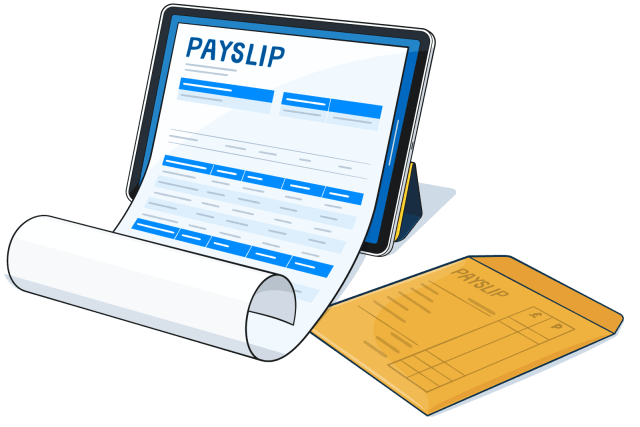In this series of guides, we’ll take you through the essentials of life as an employer in the UK, including:
1. Becoming an employer: getting started
We introduce a few things you’ll need to think about to ensure a smooth transition into being an employer.
2. Registering as an employer
How to register your business as an employer
3. Employment law
A summary of key UK employment laws you need to know about
4. Insurance for employers
An introduction to the different types of insurance you'll need
5. The Employment Allowance
Find out if Employment Allowance could save your business £5,000
Becoming an employer: getting started
In this first guide, we’ll introduce a few things you’ll need to think about to ensure a smooth transition into being an employer.
If you’re already set up as an employer, you can jump ahead to another section using the links above (or read through and pat yourself on the back for everything you’ve already achieved!).
Types of contract
Before you begin the hiring process, take the time to think about the type of employees your business needs.
Are you looking for full-time employees, or would taking someone on part-time be enough? Are you better off hiring employees via an agency or even working with a freelancer or contractor?
The type of contract you hire staff on will have implications for your business, so it’s worth asking these questions in advance. The most common types of contracts in the UK are:
Full-time or part-time permanent contracts
These are the most common types of contract and usually offered for permanent positions. You can learn more about your responsibilities when hiring full-time or part-time employees on the government website.
Fixed-term contracts
Fixed-term contracts last for a set period of time, which is agreed with the employee in advance. Learn more about your responsibilities on the government website.
Zero-hours contracts
Employees on zero-hours contracts are usually on call to work when you need them. You do not have to give them work, but they also do not have to work when asked. The government has more details on your responsibilities when hiring this type of employee. It is worth noting that the planned Employment Rights Bill will bring in some changes around zero-hours contracts.
Agency staff
Agencies find staff for other businesses, but pay the wages themselves. Find more information about your responsibilities when using agencies on the government website.
Freelancers/contractors
Freelancers and contractors aren’t classed as your employees, as they are self-employed or part of other companies. Read more about your responsibilities when working with freelancers or contractors here.

Types of employment status
Along with the type of contract offered, a person’s employment status helps determine both their rights as an employee and your responsibilities towards them as their employer. The main types of employment status are:
Employee
An employee is someone who works under an employment contract. If someone is classed as your employee for tax purposes, you must tell HMRC when the person starts being an employee or stops being an employee.
If you take on employees, you must provide them with all the same rights as a ‘worker’ (see below).
Additionally, you must provide employees with some employment rights that workers are not usually entitled to. These include:
- Statutory Sick Pay
- Statutory Maternity Pay and Leave
- Statutory Paternity Pay and Leave
- Statutory Adoption Pay and Leave
- Statutory Shared Parental Pay and Leave
- minimum notice periods if their employment is ending, (for example, if you are dismissing them)
- protection against unfair dismissal
- the right to request flexible working
- time off for emergencies
- Statutory Redundancy Pay
Learn more about when someone is classed as an employee.
Worker
A person is usually classed as a ‘worker’ if at least one of the following apply:
- they have a contract or other arrangement to do work or services for your business
- the work they do for your is in exchange for money or a benefit in kind
- they only have a limited right to send someone else to do the work
- your business has to have work for them to do as long as the contract or arrangement lasts
If you employ workers, you usually have to provide them with certain employment rights, such as:
- paying the National Minimum Wage
- protection against unlawful deductions from wages
- providing the statutory minimum amount of paid holidays
- providing the statutory minimum length of rest breaks
- providing protection against unlawful discrimination
- ensuring they work no more than 48 hours on average per week (unless the worker chooses to opt out of this right)
- providing protection for ‘whistleblowers’
- not treating them less favourably if they work part-time
Unlike employees (see above), you do not usually have to provide workers with:
- minimum notice periods
- protection against unfair dismissal
- flexible working
- time off for emergencies
- Statutory Redundancy Pay
You can learn more about when someone is classed as a worker on the government website.
Freelancers, consultants and contractors
A person is self-employed if they run their business for themselves and are responsible for managing this business. Self-employed workers are not usually paid through PAYE.
You do not usually need to provide self-employed people with the same rights as employees or workers, such as paid holidays or rest breaks.
However, if your business does choose to work with self-employed people, you may have to provide protection for their health and safety and, in some cases, protection against discrimination.
Important: There are some circumstances in which HMRC will regard someone as both self-employed for tax purposes and as a worker or employee in terms of employment law. You can learn more about when someone is classed as self-employed or a contractor on the government website.
Director
Company directors run limited companies on behalf of the company’s shareholders. Directors are usually classed as office holders (see below) for tax and National Insurance contribution purposes. If you are the director of a limited company, you are responsible for deducting both employees’ NI and employers’ NI contributions from your own salary and that of any employees through PAYE when you run your company’s payroll.
You can learn more about when someone is classed as a director on the government website.
Office holder
A person who has been appointed to a position by a company or organisation but does not have a contract or receive regular payment may be an office holder.
Similarly to directors (see above), an office holder is not classed by default as an employee. However, it’s possible for someone to be both an office holder and an employee if they have an employment contract with your company that meets the criteria for employees.
You can learn more about when someone is classed as an office holder on the government website.
Costs of being an employer
Once you’ve decided on the type of contract you want to offer, you should plan for the financial impact becoming an employer will have on your business.
Aside from paying your employees’ salaries, there are a number of other costs you’ll need to consider, including:
- National Insurance payments
- sick pay
- pension contributions
- pay for Maternity and Paternity Leave
- insurance
Create a budget that includes these factors to avoid any financial strain once your staff are on board. When you’re happy your business can handle the costs, you’re ready to take the next step towards becoming an employer!




